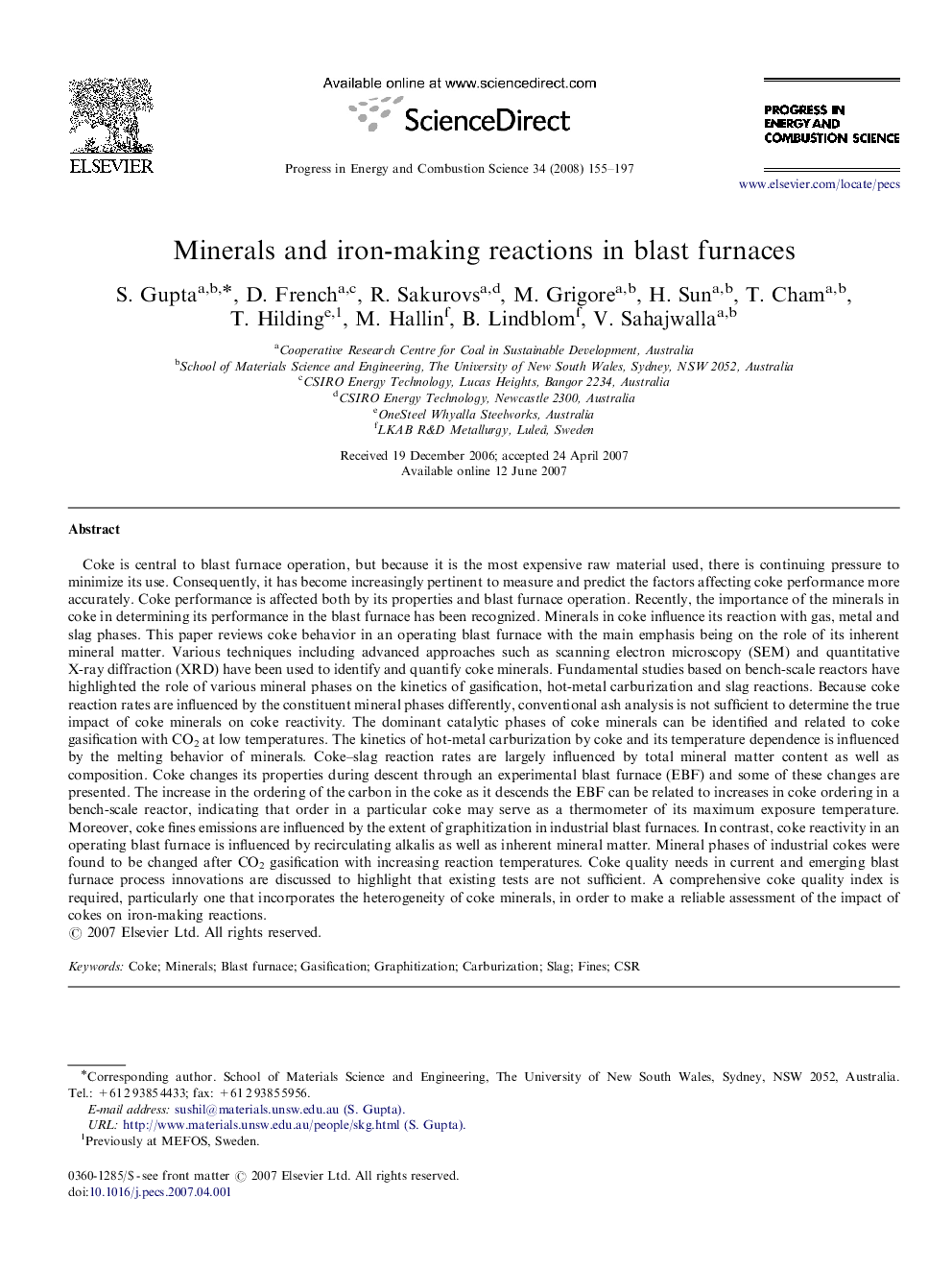| کد مقاله | کد نشریه | سال انتشار | مقاله انگلیسی | نسخه تمام متن |
|---|---|---|---|---|
| 241831 | 466336 | 2008 | 43 صفحه PDF | دانلود رایگان |

Coke is central to blast furnace operation, but because it is the most expensive raw material used, there is continuing pressure to minimize its use. Consequently, it has become increasingly pertinent to measure and predict the factors affecting coke performance more accurately. Coke performance is affected both by its properties and blast furnace operation. Recently, the importance of the minerals in coke in determining its performance in the blast furnace has been recognized. Minerals in coke influence its reaction with gas, metal and slag phases. This paper reviews coke behavior in an operating blast furnace with the main emphasis being on the role of its inherent mineral matter. Various techniques including advanced approaches such as scanning electron microscopy (SEM) and quantitative X-ray diffraction (XRD) have been used to identify and quantify coke minerals. Fundamental studies based on bench-scale reactors have highlighted the role of various mineral phases on the kinetics of gasification, hot-metal carburization and slag reactions. Because coke reaction rates are influenced by the constituent mineral phases differently, conventional ash analysis is not sufficient to determine the true impact of coke minerals on coke reactivity. The dominant catalytic phases of coke minerals can be identified and related to coke gasification with CO2 at low temperatures. The kinetics of hot-metal carburization by coke and its temperature dependence is influenced by the melting behavior of minerals. Coke–slag reaction rates are largely influenced by total mineral matter content as well as composition. Coke changes its properties during descent through an experimental blast furnace (EBF) and some of these changes are presented. The increase in the ordering of the carbon in the coke as it descends the EBF can be related to increases in coke ordering in a bench-scale reactor, indicating that order in a particular coke may serve as a thermometer of its maximum exposure temperature. Moreover, coke fines emissions are influenced by the extent of graphitization in industrial blast furnaces. In contrast, coke reactivity in an operating blast furnace is influenced by recirculating alkalis as well as inherent mineral matter. Mineral phases of industrial cokes were found to be changed after CO2 gasification with increasing reaction temperatures. Coke quality needs in current and emerging blast furnace process innovations are discussed to highlight that existing tests are not sufficient. A comprehensive coke quality index is required, particularly one that incorporates the heterogeneity of coke minerals, in order to make a reliable assessment of the impact of cokes on iron-making reactions.
Journal: Progress in Energy and Combustion Science - Volume 34, Issue 2, April 2008, Pages 155–197